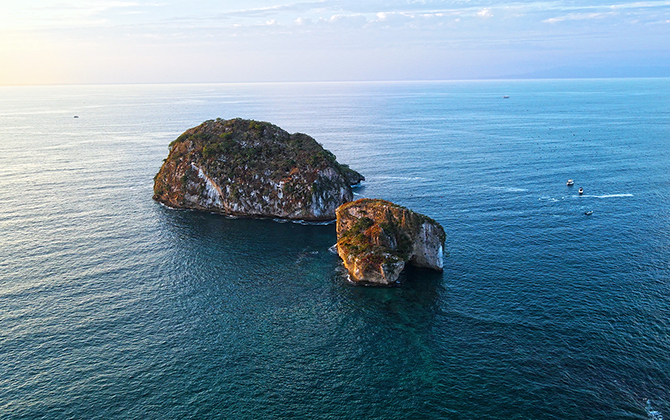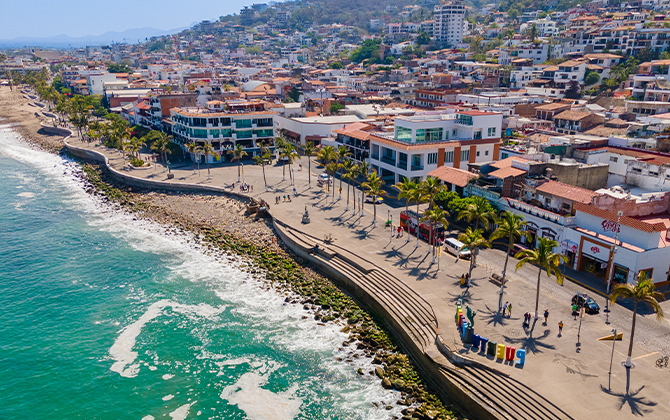Puerto Vallarta is located on the Mexican Pacific coast, known not only for its beautiful beaches and nightlife but also for its history and cultural heritage. Over the years, Puerto Vallarta has envolved from a small fishing village into a world-renowned tourist destination, while maintaining its charm and authenticity.
Origins and Early Inhabitants
The origins of Puerto Vallarta date back to pre-Hispanic times. The region was inhabited by various indigenous groups, such as the Cora and Huichol, who left a rich cultural heritage still evident in the area today. These early inhabitants lived off fishing, agriculture, and tradem establishing a deep relationship with nature that is still celebrated today.
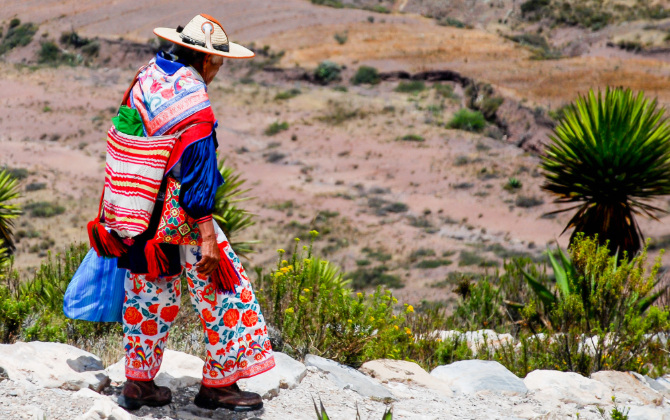
Foundation and Development
On December 12, 1851, Don Guadalupe Sánchez Torres founded what was initially known as Las Peñas de Santa María de Guadalupe. This small fishing settlement began to grow slowly, mainly due to the trade of corn, beans, and chili products. In 1918, the town was officially named Puerto Vallarta in honor of Ignacio L. Vallarta, a prominent lawyer and governor of Jalisco.
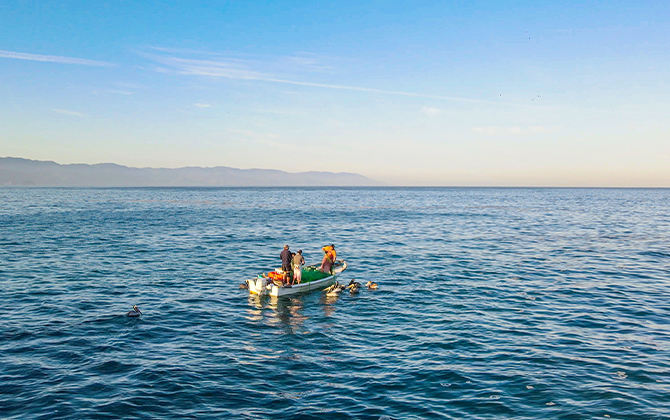
The Rise of Tourisn
The true turning point for Puerto Vallarta came in the 1960s with the filming of the movie "The Night of the Iguana," directed by John Huston and starring Richard Burton, Elizabeth Taylor, and Ava Gardner. The presence of these Hollywood stars attracted media attention and tourists, sparking a boom in tourism development.
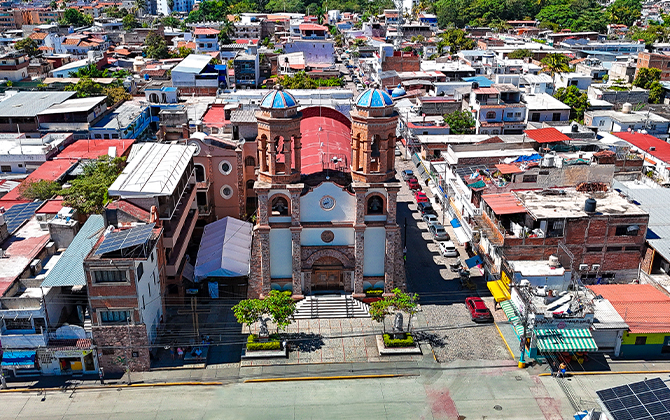
Architectural and Cultural Heritage
Puerto Vallarta is famous for its colonial architecture and cobblestone streets. The heart of the historic downtown, known as the Malecón, is a seaside promenade lined with sculptures, shops, and restaurants where you can enjoy spectacular sunsets. The Parish of Our Lady of Guadalupe, with its iconic crown, is one of the city's most recognizable landmarks and a must-visit for those exploring Puerto Vallarta.
Old Vallarta, or the Romantic Zone, retains the old-world charm of Puerto Vallarta with its white houses, red-tiled roofs, and flower-filled balconies. The neighborhood is a living testament to the city's rich history and evolution, seamlessly blending the old with the new in a harmonious way.
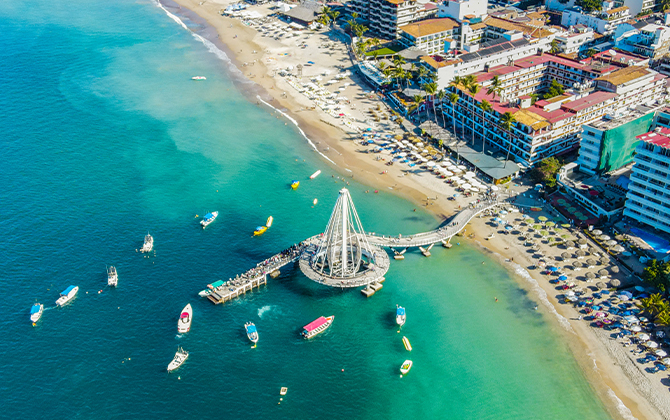
Culture and Traditions
Puerto Vallarta is a city that enthusiastically celebrates its traditions. Festivals and cultural events are an integral part of local life. During the national holidays in September, the Day of the Dead in November, and the celebration of the Virgin of Guadalupe in December, the city comes alive with color, music, and joy. These festivities not only attract tourists but also strengthen the sense of community and belonging for residents.
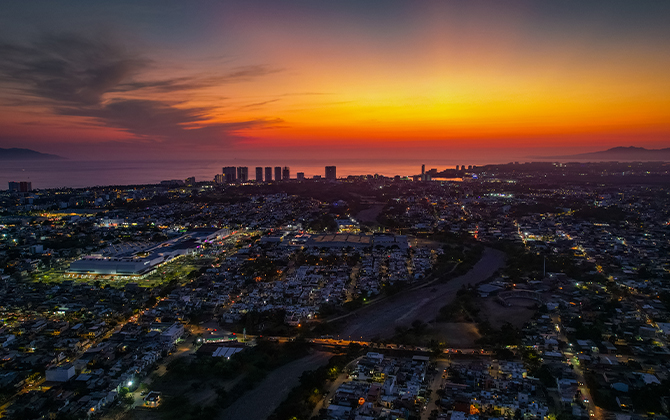
Conection to Art
Art is a vital part of Puerto Vallarta's heritage. The city boasts numerous art galleries showcasing both local and international artists. The Art Walk, a weekly cultural stroll held during the high season, allows visitors to explore and appreciate the city's rich artistic offerings. Additionally, the Vallarta Theater and various cultural venues offer a variety of performances and events that enrich the community's cultural life.
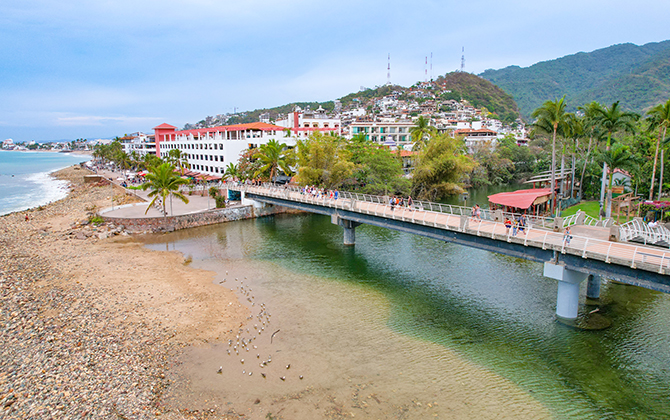
Natural Heritage Conservation
In addition to its cultural heritage, Puerto Vallarta prides itself on its commitment to environmental conservation. Banderas Bay, one of the largest bays in the world, is home to a rich marine biodiversity. Conservation efforts have been crucial in protecting species such as sea turtles and humpback whales, which visit the bay annually.
Puerto Vallarta is a place where the past and present uniquely converge. Its rich history and cultural heritage, combined with its natural beauty and vibrant community life, make this city an unparalleled destination.
